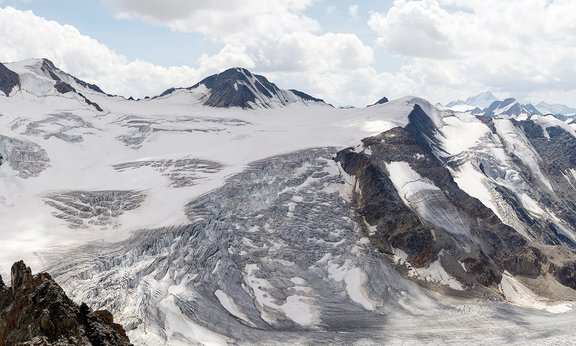The rising sea levels have several causes: thermal expansion of the water as it warms, melting glaciers and ice sheets, and finally the extraction of groundwater, which – after use in agriculture or industry – to a large extent also ends in the ocean. If the scientists add these different contributions together and compare them with the actual figures concerning rising sea levels, they will find that about five centimeters of the total rise since 1900 remain unexplained. “We see that the sea has risen by 20 centimeters in the last century, but we can only explain 15 of them,” underlines Ben Marzeion, until 2015 researcher at the University of Innsbruck and now professor at the University of Bremen.
Incomplete Inventories
“In the publication in the Nature journal, we now propose an explanation for this gap,” says Marzeion. “There is strong evidence that global glacier inventories are incomplete.” The Randolph Glacier Inventory provides data on almost all glaciers on Earth in computer-readable form and is an important basis for research. However, it has been known for some time that it is very difficult to find and identify small glaciers in remote sensing data. Marzeion: “We could speak figuratively about the dark matter of glaciology. There is strong statistical evidence that these glaciers exist, but we don’t know where they are,” David Parkes, who worked as a doctoral student at the University of Innsbruck, explains: “In addition, several glaciers disappeared during the 20th century. This means that they used to exist, but today they are rightly not present in the inventories.”
Explaining Gaps Completely
Parkes has now developed a statistical method to assess the past development of these unknown glaciers. The result is that they could fully explain the gap in the sea-level budget – the previously unexplained five-centimeter rise. “This is surprising because these unknown glaciers are so small today that they will not contribute more than 0.2 to 0.3 centimeters to rising sea levels in the future,” he says. They are therefore actually insignificant today compared to the known glaciers, which would cause an increase in sea levels of 40 to 50 centimeters in the event that they were to melt completely. “The glaciers that are so tiny today that it is difficult to find them have been very important for the rising sea levels over the past 100 years, which, in turn, is why they are so tiny today,” says Professor Marzeion, summing up the research results that have now been published.
Profiles
In 2015, Ben Marzeion took on a professorship for physical geography in the Faculty of Social Sciences at the University of Bremen, where his main area of interest is climate geography. His work focuses on the global modeling of the dynamics of mountain glaciers. The scientist is particularly concerned with the significance of glacier melting in relation to regional sea-level changes. In addition, he investigates the influence of glaciers on water availability, which can vary greatly from region to region, depending on the local climate and the needs of the local population.
David Parkes earned his doctorate through his participation in the climate geography working group in Innsbruck and Bremen, and is now employed at KU Leuven in Belgium. He is a mathematician and develops statistical methods that relate the complex spatial distribution of glaciers in mountain areas to the climatic conditions prevailing there. These methods make it possible to predict and reconstruct changes in glaciers for which very little information is available.

